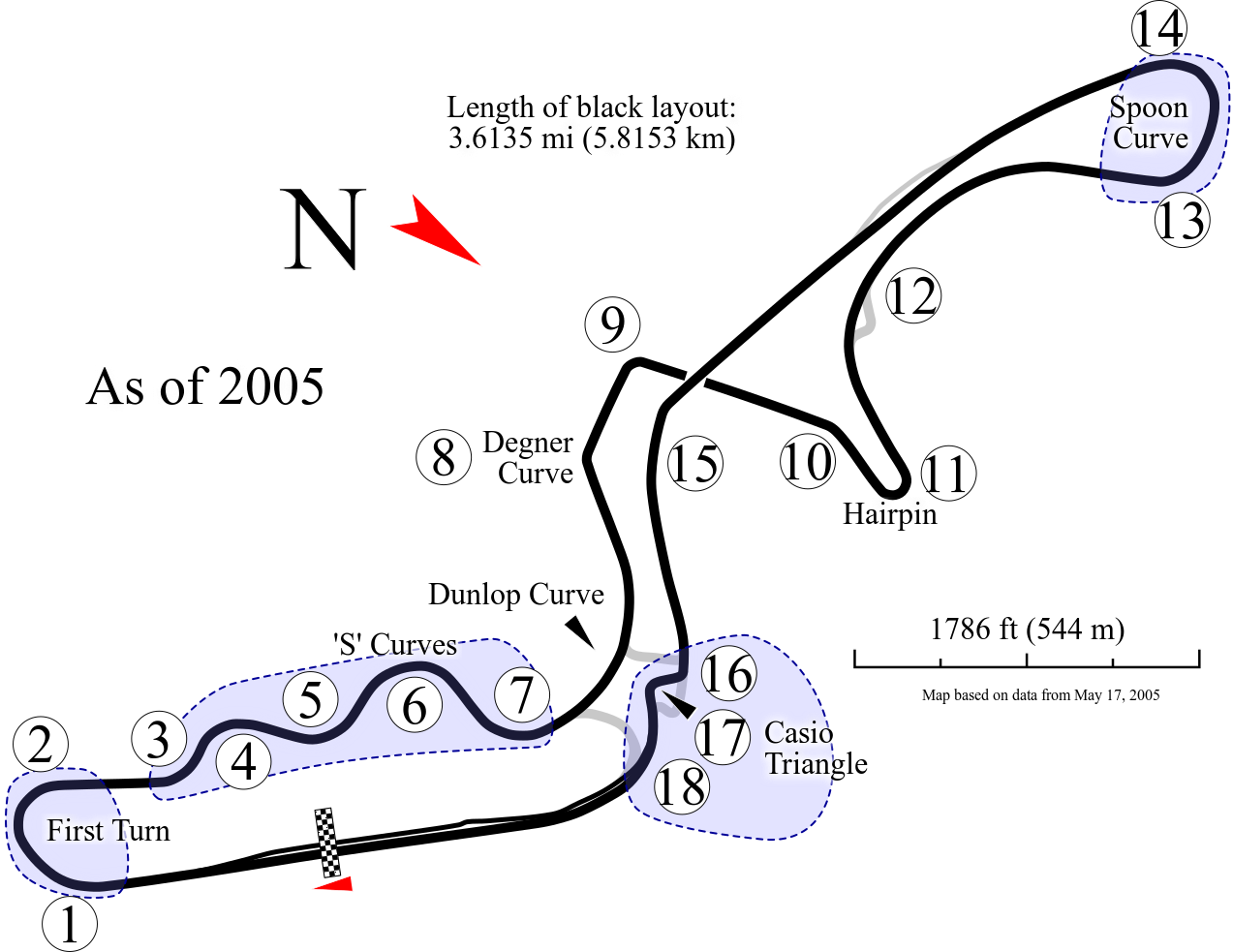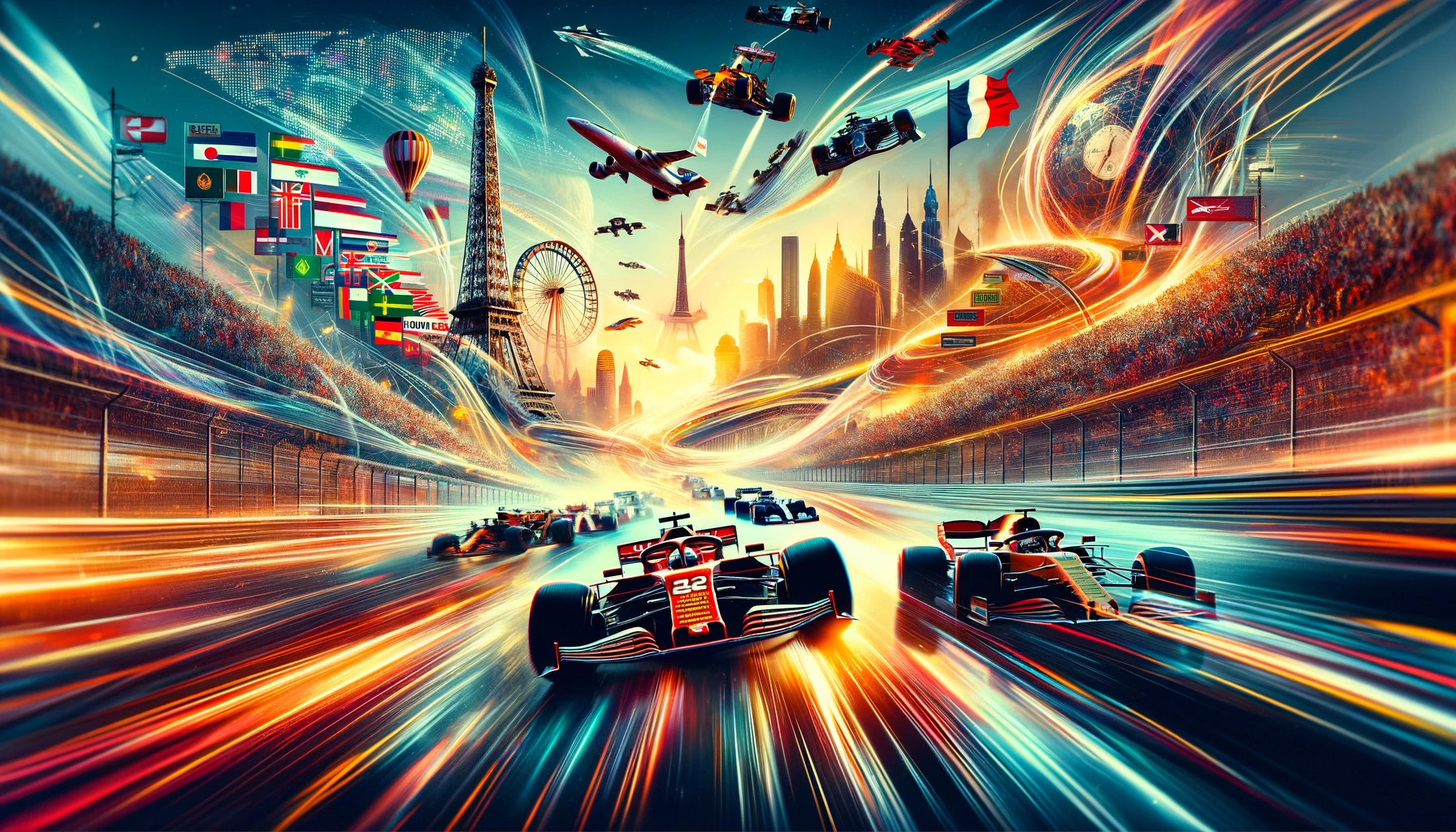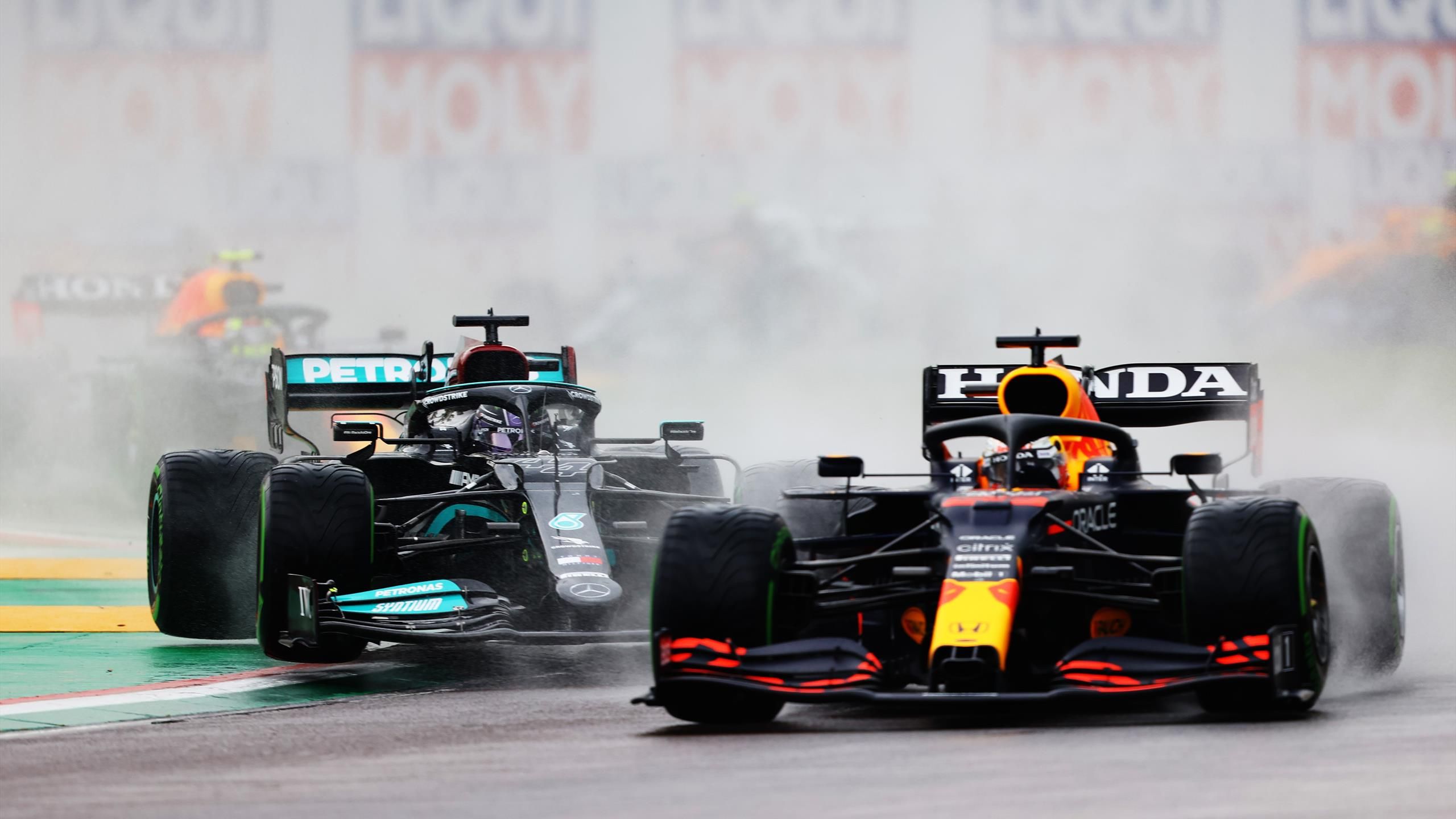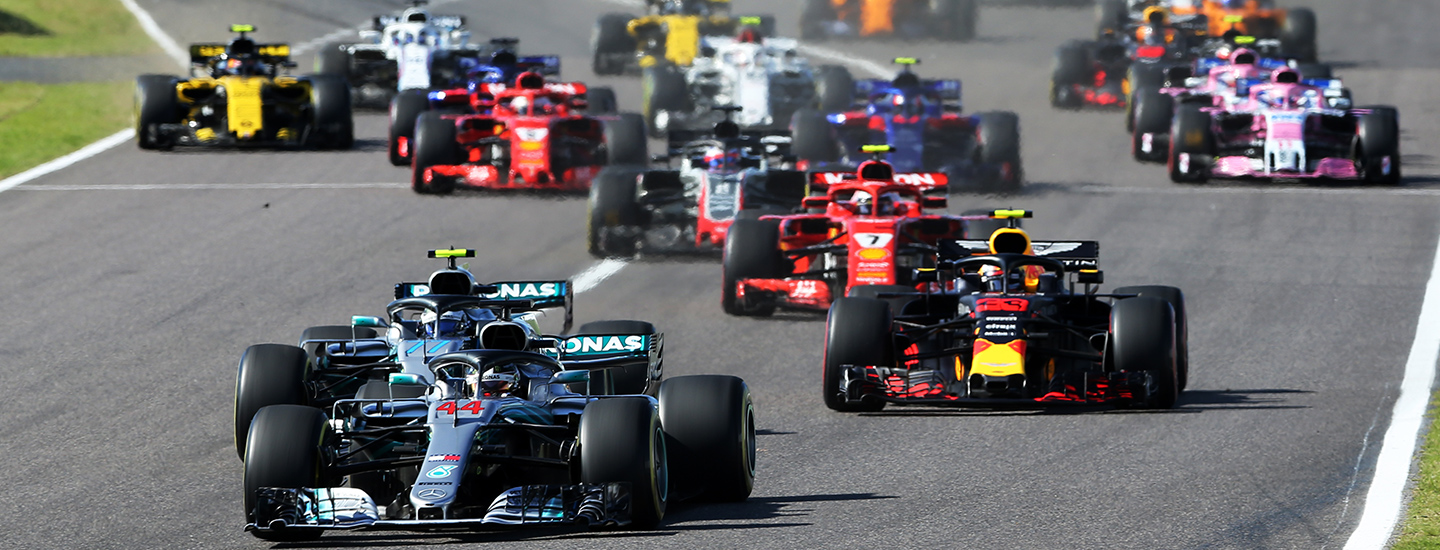
Japanese Grand Prix Suzuka 10 Questions
What is the history of the Japanese Grand Prix at Suzuka?
Suzuka has been the primary location for the F1 Japan GP since its inception. Located in the Mie Prefecture of Japan, Suzuka Circuit is a favorite among drivers due to its challenging and unique layout.
The first Formula 1 race in Japan took place in 1976, but it wasn’t at Suzuka. Instead, the Fuji Speedway was the venue. However, in 1987, the Japanese Grand Prix Suzuka became a mainstay on the calendar. The track is characterized by its figure-eight layout, a rarity in the world of motorsport.
Over the years, the race has seen numerous dramatic moments, including title deciders and intense on-track battles. Ayrton Senna and Alain Prost had one of the most famous clashes in F1 history here in 1989.
Weather often plays a crucial role in the outcome of the race. The unpredictable climate of Japan in October can bring rain, making the race even more challenging for the teams and drivers.
One more thing that makes the Japan Formula 1 race special is the passionate fans. The Japanese fans are known for their dedication, and they bring an electric atmosphere to the Grand Prix, celebrating not just the local heroes but every driver and team on the grid.
For more insights into the world of Formula 1, you can check formula1review.com.
Why is Suzuka considered a challenging track for the drivers?
Suzuka is not just another race track on the F1 calendar. It’s a beast that demands respect, skill, and precision. What makes Suzuka stand out is its intricate design, a blend of high-speed stretches, technical sections, and elevation changes.
The most iconic section of the track is the “Esses”. This series of rapid left-right turns requires rhythm, balance, and concentration. Get one corner wrong, and the rest of the sequence is compromised.
The Degner curve, a fast right-hander followed by a tighter left, is another tricky spot. It’s a place where many have ended their race in the barriers.
Then there’s the Spoon curve. This long, double-apex left-hander tests the patience of drivers. It’s all about the exit speed here, as a good run can set up an overtaking opportunity into the next straight.
The 130R is a legendary corner. Named after its original 130-meter radius, it’s a high-speed left-hander that has witnessed some heart-stopping moments in F1. Courage and commitment are needed here.
Lastly, the final chicane is critical. It’s the last overtaking point on the track and has been the scene of many race-defining moments in the Japanese Grand Prix Suzuka.
The track’s complexity is a significant reason why it’s a favorite among many drivers. They see it as a real test of their skills, and a good lap around Suzuka is a badge of honor.
For more articles on iconic tracks, you might want to visit formula1review.com/blog.
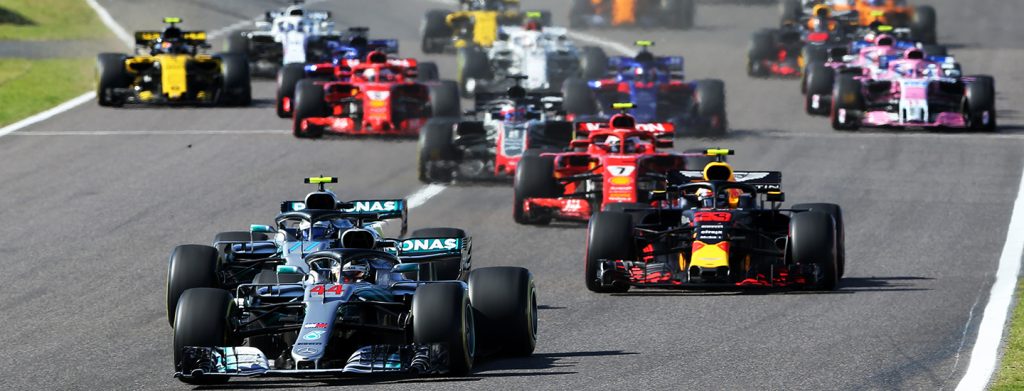
How has the Japanese Grand Prix impacted championship battles in the past?
The Japanese Grand Prix Suzuka has been the backdrop for many of Formula 1’s most memorable championship battles. One cannot speak of the race without highlighting the intense rivalries that have been settled on its asphalt.
In 1989 and 1990, the Suzuka circuit played host to one of the most iconic rivalries in Formula 1 history – Ayrton Senna versus Alain Prost. In 1989, Senna and Prost collided at the final chicane, a move that eventually saw Prost clinch the title. A year later, the roles were reversed when Senna intentionally took out Prost at the first corner, granting the Brazilian the championship.
1996 saw Damon Hill claim his sole championship at the F1 Japan GP, after his rival and Williams teammate, Jacques Villeneuve, faced mechanical problems.
Kimi Räikkönen’s surprise win in 2005 stands as one of the greatest comebacks in F1 history. Starting from 17th, Räikkönen managed to win the race, a key moment in his fight against Fernando Alonso for the championship.
Lastly, 2019 had its share of drama as Mercedes clinched their sixth consecutive constructors’ championship at Suzuka, demonstrating their recent dominance in the sport.
The unpredictable weather, combined with the circuit’s challenging layout, often results in dramatic races that can shake up the championship standings. With so many historical moments, it’s clear why the Japanese Grand Prix Suzuka is eagerly anticipated each year.
For more on historic races, formula1review.com/blog has comprehensive articles that dive deep into F1’s rich history.
What makes the Japanese fans special in the world of Formula 1?
The fervor and passion of the Japanese fans are unparalleled in the Formula 1 world. Attend any Japan Formula 1 race, and you’ll witness an atmosphere unlike any other Grand Prix.
Japanese fans are known for their meticulous attention to detail. From creating intricate driver-inspired costumes to crafting detailed replicas of cars and helmets, their dedication is evident. It’s not uncommon to see fans donning full driver uniforms, even replicating specific race-day nuances.
They also have a unique tradition of gifting drivers with handmade items, showcasing their deep connection and affection for the sport and its participants.
But it’s not just about the costumes or gifts. Their knowledge of the sport is vast. They remember past races, incidents, and are always up-to-date with the latest developments in the paddock.
Furthermore, the fans have a profound respect for all drivers, not just the frontrunners. Even the mid-field and back-marker drivers receive adulation and cheers, emphasizing the inclusive spirit of the Japanese F1 community.
Their unwavering support, even during challenging times such as races affected by natural calamities, demonstrates their commitment. In the world of Formula 1, the Japanese Grand Prix stands out not just for the track and the racing but also for the heartwarming embrace of its fans.
| Wins | Driver | Years won |
|---|---|---|
| 6 | Germany Michael Schumacher | 1995, 1997, 2000, 2001, 2002, 2004 |
| 5 | United Kingdom Lewis Hamilton | 2007, 2014, 2015, 2017, 2018 |
| 4 | Germany Sebastian Vettel | 2009, 2010, 2012, 2013 |
| 2 | Japan Yoshikazu Sunako | 1966,[26] 1969[27] |
| 2 | Japan Motoharu Kurosawa | 1969, 1973 |
| 2 | Austria Gerhard Berger | 1987, 1991 |
| 2 | Brazil Ayrton Senna | 1988, 1993 |
| 2 | United Kingdom Damon Hill | 1994, 1996 |
| 2 | Finland Mika Häkkinen | 1998, 1999 |
| 2 | Spain Fernando Alonso | 2006, 2008 |
How do teams prepare for the unpredictable weather conditions at Suzuka?
Preparation for the F1 Japanese Grand Prix is unlike any other race due to Suzuka’s capricious weather patterns. With the Grand Prix often scheduled during Japan’s typhoon season, teams must be on their toes, adapting to sudden climatic changes.
Teams rely heavily on detailed weather forecasts. In the lead-up to the race weekend, meteorologists working with F1 teams provide hourly updates. These reports are crucial for decisions related to tire choice, aerodynamic setups, and race strategy.
Tire management is paramount. The unpredictable conditions can switch from heavy rain to a drying track within laps. Teams often have to make split-second decisions on tire changes, balancing between wet, intermediate, or slick tires.
The Japan Formula 1 race is also an arena where the role of pit crews becomes even more vital. Quick decisions regarding pit stops, adapting to the changing weather conditions, and ensuring the car is equipped with the right setup can make or break a race.
Moreover, teams use simulations to prepare for various scenarios. These simulations take into account different weather patterns, helping strategists devise multiple race plans.
Another factor is driver feedback. During practice sessions, drivers relay real-time information about track conditions, grip levels, and potential wet patches, which aids in refining the race strategy.
In essence, while the unpredictable weather at the Japanese Grand Prix Suzuka poses significant challenges, meticulous preparation and adaptability are the keys to mastering this iconic race.
For deeper insights into team strategies and preparations, formula1review.com/blog offers detailed analyses.
What are the economic impacts of the Japanese Grand Prix on the local community?
The Japanese Grand Prix Suzuka is more than just a sporting event; it’s a significant economic catalyst for the local community of Suzuka and the Mie Prefecture.
Every year, the Grand Prix attracts tens of thousands of fans, both local and international. These attendees spend money on accommodation, dining, transportation, and other recreational activities, infusing millions into the local economy.
Hotels, inns, and other lodging establishments often get booked months in advance, guaranteeing them a substantial revenue stream. Restaurants and eateries experience an influx of customers, with some even introducing special F1-themed menus to attract fans.
Local vendors and artisans benefit immensely. They set up stalls around the circuit and in popular tourist areas, selling memorabilia, handmade crafts, and local delicacies. This event provides them with an opportunity to showcase their products to an international audience.
Additionally, the F1 Japan GP has also paved the way for infrastructural development in the region. Over the years, transport and communication facilities have been upgraded to cater to the increasing number of visitors.
Beyond the immediate economic benefits, the Grand Prix also offers long-term advantages. The global media coverage Suzuka receives during the race weekend promotes the region as a tourist destination, attracting visitors throughout the year.
In conclusion, the Japanese Grand Prix isn’t just a race; it’s an annual event that significantly bolsters the economic health and global recognition of the Suzuka community.
Why is the 130R corner at Suzuka so famous in Formula 1 circles?
The 130R, named due to its original radius of 130 meters, is one of the most iconic corners in the F1 calendar, located at the Japanese Grand Prix Suzuka circuit. Its reputation is earned through a combination of speed, challenge, and the rich history of events that took place there.
Driving into the 130R, drivers approach this left-hand turn at tremendous speeds, often exceeding 310 km/h. The high-speed nature of this curve means that there’s a tiny margin for error, demanding exceptional skill and bravery from the drivers.
Over the years, the 130R has witnessed incredible overtaking maneuvers, showcasing the audacity of the drivers. One memorable moment was in 2005, when Fernando Alonso overtook Michael Schumacher on the outside of 130R, a move that’s talked about even today.
However, it’s not just about the spectacular moves; the 130R has also seen its share of dramatic crashes, highlighting the inherent risks of this corner. Safety modifications have been made over time, without diluting the corner’s essential character.
The blend of speed, danger, and historic moments makes 130R a legendary spot in the Formula 1 world. When the F1 fraternity speaks about the Japanese Grand Prix Suzuka, the conversation invariably veers towards this remarkable corner.
How does Suzuka compare to other tracks in terms of technical challenges?
Suzuka stands out in the F1 calendar, not just for its historical significance or its fervent fans but for the technical challenges it poses. When drivers talk about the F1 Japan GP, they often reference its demanding layout.
One of the few figure-eight circuits in the world, Suzuka’s layout is unique. This design leads to a balanced mix of high-speed stretches, tight corners, and elevation changes, challenging both the car and the driver.
The Esses, a sequence of rapid left-right turns at the beginning of the lap, tests a car’s aerodynamic balance and a driver’s rhythm. Mistakes here can cost precious time, emphasizing precision.
Then there’s the Degner Curve, a tight right-hander that’s preceded by a downhill stretch. It’s a spot known for errors, as drivers often misjudge their braking.
The Hairpin and the Spoon Curve further challenge the drivers with their tight angles, requiring sharp braking and precise throttle control for optimal exits.
Lastly, as discussed earlier, the 130R provides a high-speed challenge, pushing the aerodynamic capabilities of the cars to the limit.
Compared to other tracks, Suzuka is both physically and mentally exhausting for drivers. The blend of high-speed sections and technical turns requires continuous concentration, making it one of the most demanding circuits on the F1 calendar.
How have technological advancements impacted race strategies at the Japanese Grand Prix?
The Japanese Grand Prix Suzuka has always been a race that demands a harmonious blend of human skill and technological prowess. As F1 has evolved, technology has played an increasingly significant role in dictating race strategies at Suzuka.
Modern F1 cars are equipped with a plethora of sensors that feed real-time data to the teams. This data, which includes tire temperatures, brake wear, fuel consumption, and aerodynamic loads, is invaluable for strategists during the Japan Formula 1 race.
Simulation software has become more sophisticated. Prior to the race weekend, teams run numerous scenarios to determine the optimal race strategy. Factors such as weather conditions, tire degradation rates, and fuel loads are taken into account.
The variable weather at Suzuka has also made the introduction of advanced weather prediction systems essential. Teams often employ meteorologists to provide the most accurate forecasts, allowing for on-the-fly strategic tweaks.
DRS (Drag Reduction System), introduced in 2011, has changed overtaking strategies at Suzuka, especially on the long back straight before the 130R, creating opportunities for more overtaking maneuvers.
Pit stop technology has also seen leaps and bounds in advancements. Precision tools and training enable teams to complete tire changes and adjustments in mere seconds, making split-second decisions on pit strategy crucial.
In essence, while the driver’s skill is indispensable at the Japanese Grand Prix Suzuka, technological advancements over the years have profoundly impacted how teams approach their race strategies.
For those interested in the deep integration of technology in F1, formula1review.com/blog offers a myriad of articles.
What’s the environmental footprint of the Japanese Grand Prix and how is Formula 1 addressing it?
Every global event, including the Japanese Grand Prix Suzuka, comes with an environmental footprint, primarily from transportation, energy consumption, and waste generation. However, Formula 1 has been proactive in addressing these challenges.
Transportation is a significant contributor. The movement of teams, equipment, and fans to and from Suzuka generates a sizeable carbon footprint. Formula 1 is addressing this by researching and gradually implementing logistics solutions that minimize long-haul transportation and promote efficient local transport methods.
Energy consumption, especially at the circuit, has been a concern. The use of hybrid power units since 2014 has not only improved the efficiency of the cars but also set an example of integrating renewable energy sources. Many tracks, including Suzuka, are looking into harnessing renewable energy for their operations.
Waste generation, especially during race weekends, is considerable. F1 has implemented stricter waste management protocols, emphasizing recycling and minimizing single-use plastics. Initiatives to promote reusable items among fans and vendors during the F1 Japan GP have been gradually gaining traction.
Furthermore, Formula 1’s commitment to become net carbon zero by 2030 is an ambitious goal that encompasses all Grand Prix events, including Suzuka. Collaborative efforts with teams, partners, and promoters are in place to achieve this target.
In sum, while the Japanese Grand Prix Suzuka does have an environmental impact, concerted efforts by Formula 1 and the local organizers are paving the way for a more sustainable future for the sport.

